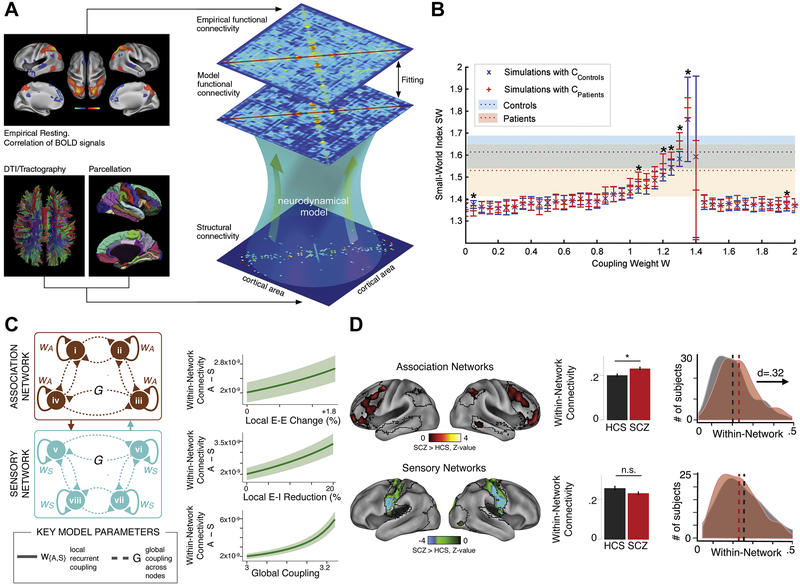Figure 1.
Computational circuit models of resting-state dynamics in the human brain and their application to study of functional dysconnectivity in schizophrenia. (A) Modeling framework. The neurodynamical model simulates dynamical activity of interconnected microcircuits, each representing a parcellated brain area. Structural connectivity, defining the strengths of long-range connections between local areas, is derived from diffusion magnetic resonance imaging tractography. The simulated blood oxygen level–dependent (BOLD) signal yields a model functional connectivity pattern, which can be compared with empirical functional connectivity patterns. The biophysical parameters of the model (e.g., local or long-range synaptic strengths) can then be fitted to optimize this correspondence. (B) Application of the model to study structural and functional dysconnectivity in schizophrenia. The graph-theoretic small-world index is calculated on the simulated functional connectivity, using distinct structural connectivity matrices for control subjects and patients with schizophrenia, as a function of the global coupling strength, and compared with empirically measured values (dotted lines). (C) Expansion of the model to incorporate hierarchical heterogeneity of local circuit properties, specifically stronger recurrent excitation (W) in association with cortical networks compared with sensory cortical networks. Elevated excitation-inhibition ratio increases preferential dysconnectivity in association networks in the model. The difference between association and sensory measures (A – S) of within-network connectivity (covariance) is plotted. (D) Empirical measures of within-network connectivity in schizophrenia reveal preferential increase in connectivity in association networks. DTI, diffusion tensor imaging; E-E, excitatory-to-excitatory; E-I, excitatory-to-inhibitory; HCS, healthy control subjects; n.s., not significant; SCZ, schizophrenia (patients). [(A) Modified with permission from Deco et al. (31); (B) modified with permission from Cabral et al. (37); (C) and (D) modified with permission from Yang et al. (35).]

